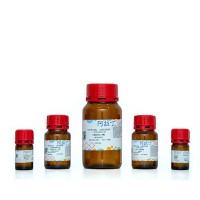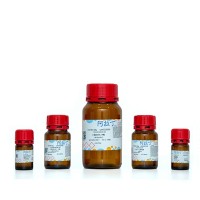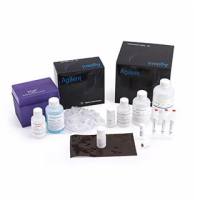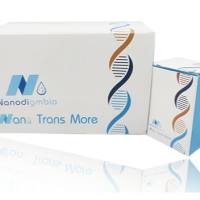Long-PCR Reagents and Guidelines
互联网
973
==========
Following the results of Cheng et al. (1) we have had success using Tth (ABI/Perkin-Elmer) as the main-component polymerase and Vent (New England Biolabs) as the fractional-component polymerase.
-
For PCR with low-complexity templates (e.g., phage l, plasmid and cosmid inserts)
- 50ml reaction
-
1-2.5 U Tth
-
0.02 U Vent
-
0.2 mM each dNTP
-
20-40 pmoles each primer (400-800 nM)
-
1.1-1.2 mM Mg(OAc)2
- 105 -107 template molecules
-
For PCR with moderate-complexity templates (e.g., bacterial genomic DNA)
-
50ml reaction same as above except for the following change
-
0.1 U Vent
- This Vent concentration has not been completely optimized and more Vent might be better, but this concentration works well. Please experiment.
No data available yet; please inform us of your data.
Cycle times and temperatures
==========
Generally, we have been using two temperature cycles with one annealing/extension step @ 68? and a short melting step @ 94?.
Presently, a rough formula for calculating annealing/extension times is
- 1 min + (2.5 sec/100 bases)
Generic Long-PCR Program
==========
-
Initial melting 94?;, 10-15 sec
-
Cycles 1-15 94?;, 10 sec @; 68?;, x min (15 times)
-
Cycles 16-30 94?;, 10 sec @; 68?;, x min +15 sec/cycle (15 times)
Picking Primers
==========
We have had success using the following guidelines for primers (these are not inviolable rules, they are simply guidelines)
-
Primers are 20 to 23 bases in length
-
G+C = 12 bases
-
A+T = 8 to 11 bases
- Ideal Tm = 60?; to 68? in 85 mM salt.
-
Avoid primer hairpins.
- Avoid primers with 3' complementarity (results in primer-dimers).
One additional piece of advice: Pick primers with A/T-rich 3' ends if possible (2). G/C-rich 3' ends may be too sticky and give non-specific products. Using this additional rule primer length might increase to 25 or 26 bases. We have not used this rule in our primer-picking but are planning to in the near future.
Materials
========
-
Long-PCR buffer
-
85 mM KOAc
-
25 mM Tricine pH 8.7 (adjust pH of stock solution with KOH)
-
8% glycerol
- 1% DMSO (1 to 4% works)
A 5X buffer stock containing 5% DMSO (1% final conc.) can easily be made using 1 M Tricine and 1 M KOAc stock solutions as follows.
-
10 ml 5X buffer
-
4.25 ml 1M KOAc
-
1.25 ml 1M Tricine, pH8.7 @ 25? (with KOH)
-
4.00 ml glycerol
-
0.50 ml DMSO
上一篇:PT-PCR 下一篇:Long PCR Reagents and Guidelines(2)







